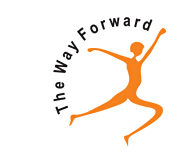 |
 |
 |
 |
 |
 |



|
 |

| A gender comparison of tobacco use and psychosocial risk factors among urban Indian youth |
 |
| Session |
Factors Associated With Tobacco Use Among Youth I (17 Papers)
|
| Date |
Tuesday, 10th March
|
| Presenting Author |
Amenah Babar
|
| Author(s) |
K. Srinath Reddy, Cheryl Perry, Melissa Stigler, Amenah Babar
|
| Country |
UNITED STATES OF AMERICA |
Abstract Body |
 |
| Background: Of growing concern is the increase in tobacco use among adolescents in India. The 2000 Global Youth Tobacco Survey estimated the tobacco use in any form to be greater than 40% in youth aged 13-15 years old in nine Indian states, and it is estimated that 5 million children under age 15 are addicted to tobacco in India. Objective: This study examined the distribution of psychosocial risk factors and prevalence of tobacco use among youth in urban India by gender. Methods: Data were obtained from a cross-sectional baseline survey of Project MYRTI, a group-randomized tobacco intervention trial involving 32 schools in Delhi and Chennai. Mixed-effects regression models examined the relationship between current tobacco use and related psychosocial risk factors, and compared distribution of factors by gender. Interaction between gender and grade was also studied. Results: 3.41% of girls and 5.56% of boys were reported as currently using tobacco. Psychosocial risk factors that were significantly related to tobacco use varied between genders. For example, advertising was a significant risk factor in girls and not in boys. Across the board, girls showed lower risk for all psychosocial risk factors, except for perceived prevalence of chewing and smoking for which girls had higher risk compared to boys. Conclusions: While it is expected that tobacco use and risk will be higher in boys, in light of increased tobacco rates in females, it is important to identify specific psychosocial risk factors that may be important to address in interventions, such as advertising and perceptions. |
 |
| |
|
 |
|


